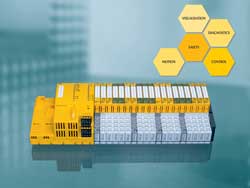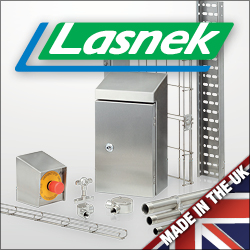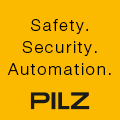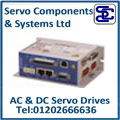
Posted to News on 31st Mar 2009, 14:54
Pilz launches PSS4000 automation control system
Pilz Automation Technology is launching the PSS4000 Automation System and PAS4000 software suite that the company says provide a new way to design, program and implement automation. It also takes Pilz from being a company focused on safety to one that offers a comprehensive automation system. A key feature of the PSS4000 concept is the integration of safety, standard and motion control, as well as visualisation and diagnostics, with all data conveyed via a SafetyNET p Ethernet-based industrial fieldbus network. In addition, the software suite enables all aspects of an automation project to be accessed via a single interface.

One of the most important trends in machine design since the introduction of PLCs (programmable logic controllers) in the 1970s has been decentralisation of control functions. At first sensors and actuators were wired directly to the PLC before the use of remote I/O modules became popular in the 1980s. More recently there has been a move towards decentralised control functions. Initially the benefits of decentralisation lay in reduced component-related costs, but now decentralisation offers lower system-related costs through improved flexibility and reusability, as well as a reduction in engineering effort. The Pilz PSS4000 takes decentralisation to a new level by virtue of the close integration of all aspects and the way in which configuration and programming is carried out via a single Pilz Automation Suite, the PAS4000, which provides centralised access to the decentralised system. Material can therefore be copied and reused extremely easily both within a project and from one project to another. This feature is believed to be unique.
Benefits of the PSS4000

Having a common interface in the PAS4000 for all aspects of the control system - ie safety, standard (non-safety) control, motion, diagnostics and visualisation - makes it easier for engineers to develop the complete automation system. Furthermore, safety has been integrated from the outset rather than added later, which means that it is far more closely integrated with the other aspects of the system than is the case with products from other manufacturers. Note, however, that access to safety functions in the PAS4000 suite can be password-protected to help ensure that only competent engineers work on this aspect of the control system.
Another innovation in the PAS4000 suite is the programming of safety-related functions using tools that are compliant with the IEC 61131-3 standard for PLC programming languages. Pilz believes that this is another industry first. Standards-compliant programming of safety functions makes it easier for engineers familiar with PLC programming to gain the necessary competence to work with safety functions.
Hardware
Pilz has designed the PSS4000 system to suit a wide range of machine types, though the biggest benefits are likely to be found in complex or modular machines. The hardware has been designed in such a way that customers only need to pay for the functionality that they need, thereby making the system as cost-effective as possible.
Three classes of PSS4000 hardware device are being launched, all based on the existing Pilz PSSuniversal decentralised I/O system and designed to withstand shock and vibration as well as temperatures of -40 to +70 degrees C.
- The PSSuniversal PLC is a programmable controller for safety and standard control functions. Up to 64 I/O modules can be connected for communicating with safety and standard devices. Each PSSu PLC features an integral power supply, an Ethernet switch and two Ethernet ports for programming, communicating with other devices on the SafetyNET p network and remote access via Ethernet TCP/IP. Configuration and program data is stored on an SD card so that, in the event of the hardware having to be replaced, the SD card can be transferred to the new hardware and the system can be operational again in the shortest possible time.
- For smaller or less complex applications, the PSSuniversal multi is effectively a functional expansion of the existing Pilz PNOZmulti modular safety controller. In common with the PSSu PLC it can connect to a maximum of 64 I/O modules and it incorporates a power supply and an SD card. An Ethernet port is provided and remote access is available via Ethernet TCP/IP. The PSSu multi is configured using PASmulti, a tool within the PAS4000 suite that is a further development of the existing Pilz PNOZmulti Configurator graphical configuration tool. Note, however, that function blocks from the IEC 61131-3 environment can be used within the PASmulti tool.
- PSSuniversal I/O modules provide remote I/O connections for safety and standard devices, with two Ethernet ports, an Ethernet switch and a SafetyNET p interface provided. This hardware also includes an integral power supply and there is an RFID tag for storing the symbolic device addresses.
These three types of head unit can be used in virtually any combination within a single overall system, and each head module can be fitted with a wide variety of safety and standard I/O modules - enabling a system to be tailored to suit an application's requirements. Examples of safety modules are digital inputs, digital outputs, relay outputs, analogue inputs and block switching modules. Standard (non-safety) functions available include digital and analogue inputs and outputs, counters, thermocouple inputs and serial interfaces. Further modules are available to link between head units for complex control systems or those extending over long distances. Up to five head units can be linked, each separated by a maximum distance of 100m.
SafetyNET p
The backbone of the PSS4000 system is SafetyNET p. Pilz has developed two speed classes of SafetyNET p: RTFN (real time frame network) for fieldbus class communication and for networking individual production cells with processing cycles of approximately 1ms; and RTFL (real time frame line) for real-time communication in highly dynamic applications where a guaranteed scan time of 62.5us or less is required, such as for high-speed filling and packaging machinery, or where servo drives or robots need to be networked. Both speed classes are compatible with each other and may be used separately or in combination. Users can create linear, star or tree topologies, or any hybrid of these.
With SafetyNET p, safety-related data and standard control data are physically mixed but logically separated. In addition, other industrial Ethernet systems such as Profinet, Ethernet/IP and EtherCAT can also be connected to SafetyNET p, as can any Ethernet-compatible device such as a PC, camera, printer or display. Because SafetyNET p is based on Ethernet, it can also be used as a platform for IP-based utilities such as e-mail, the internet or streaming.
Where non-safety wireless communications are required, Pilz offers InduraNET p (Industrial Radio Network). InduraNET p modules are available to add wireless links seamlessly to a SafetyNET p network and, therefore, a PSS4000 control system. A major feature of InduraNET p is that the communication technology is especially hardened to ensure reliable communications in industrial environments.
Software
In the development of the PSS4000 system, Pilz has placed a great emphasis on creating the user-friendly and versatile PAS4000 suite of software tools that enable all aspects of the system (safety, standard control, motion control, etc) to be accessed from a single interface, and allow users to drag-and-drop information from one project to another.
Tools within the suide include: PAScal, PASmotion, PASvisu, PASdiag, PASconfig, PASstartup, PASmulti, PAS PLC, and PAScomponent. PAS4000 also performs functions ranging from communications and database management through to reporting and user management.
Furthermore, the programming has been designed to comply with the IEC 61131-3 standard, giving users the choice of instruction list, structured text, function block diagram, ladder diagram and sequential function chart programming. It is believed that the PAS4000 is the first instance of an IEC 61131-3 language being available for programming safety-related functions. In addition, the safety and standard functions on the PSSuniversal multi can be configured with the PASmulti, which is a development of the intuitive graphical configuration tool currently available as the PNOZmulti Configurator.
To simplify programming even further and save more engineering time, Pilz has provided an extensive library of standard functions that can be used as building blocks. As users develop their own blocks - or 'components' at a higher level - these can be added to the library for reuse later.
Universal symbolic descriptions of signals, programs and devices ensure clear plant programming and provide easier navigation and a more intuitive view of the control system. Anything in the system can be labelled with conventional equipment identifiers. Clear device and system identification is a significant advantage during training or servicing, as it minimises the risk of mistakes being made due to misinterpretation of technical descriptions. Additionally, the PAS4000 provides better support for collaboration between mechanical engineers, electrical engineers, control engineers and programmers.
A system-wide mapping table also aids clarity and ensures there is no duplication of symbolic addressing, thereby reducing errors and saving time during development and commissioning. Centralised mapping also makes it simpler and quicker to modify the system at a later date.
A further interesting feature of the PAS4000 software is the credit-based licensing scheme in which function blocks and software modules are paid for on a per-use basis. The software is shipped with sufficient credits to finalise several projects, with the licence permitting the software to be installed on any machine. Credits are only used when programs are downloaded to the hardware but, prior to downloading a program, the PAS4000 displays the number of credits required so that users can monitor this element of the project's costs. Once the initial credits have been used, customers can purchase additional credits from the Pilz website.
This potential for saving money through a cost-effective licensing arrangement is undoubtedly attractive, but the main benefits of the PSS4000 concept remain the ease of use, reduction in engineering effort and quicker time to market.
PSS4000 hardware and software will be available to purchase in the fourth quarter of 2009. Meanwhile, Pilz Automation Technology is seeking UK-based field trial sites; for these sites, Pilz will supply the hardware and software free of charge and provide full technical support.
Email [email protected] for more information about the PSS4000 Automation System, telephone +44 (0)1536 460766 or visit www.pilz.co.uk/solutions/pss4000/index.jsp.


















